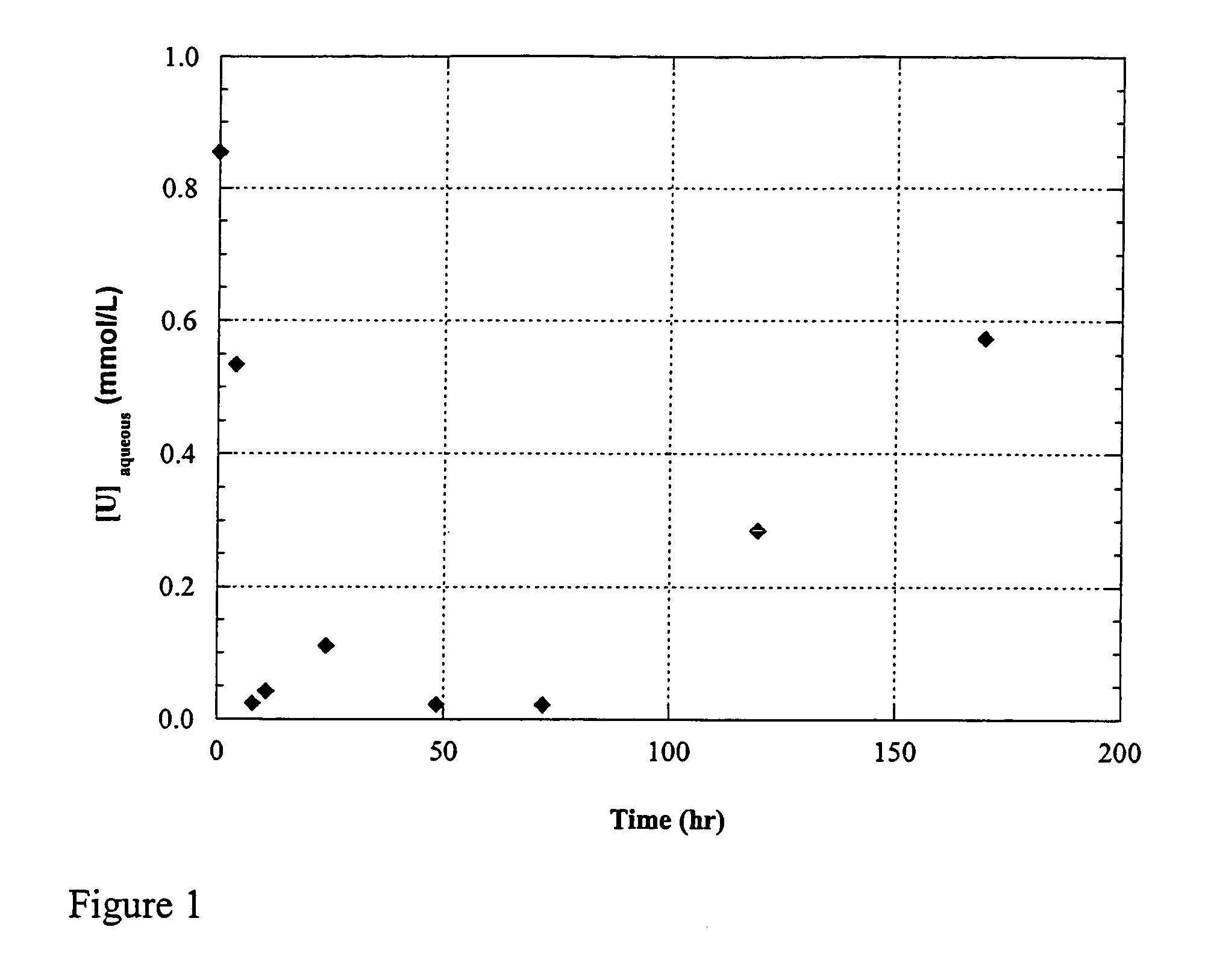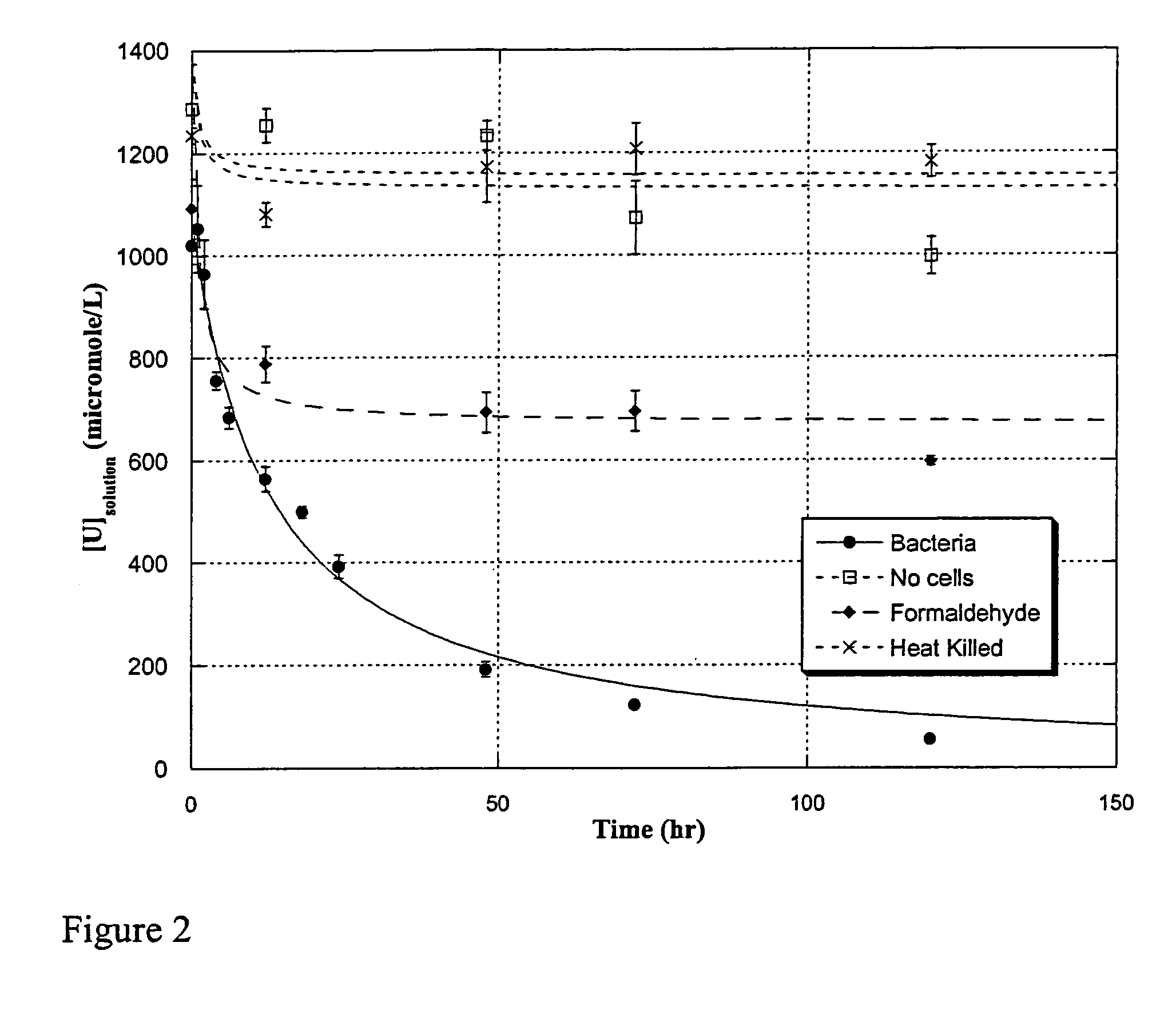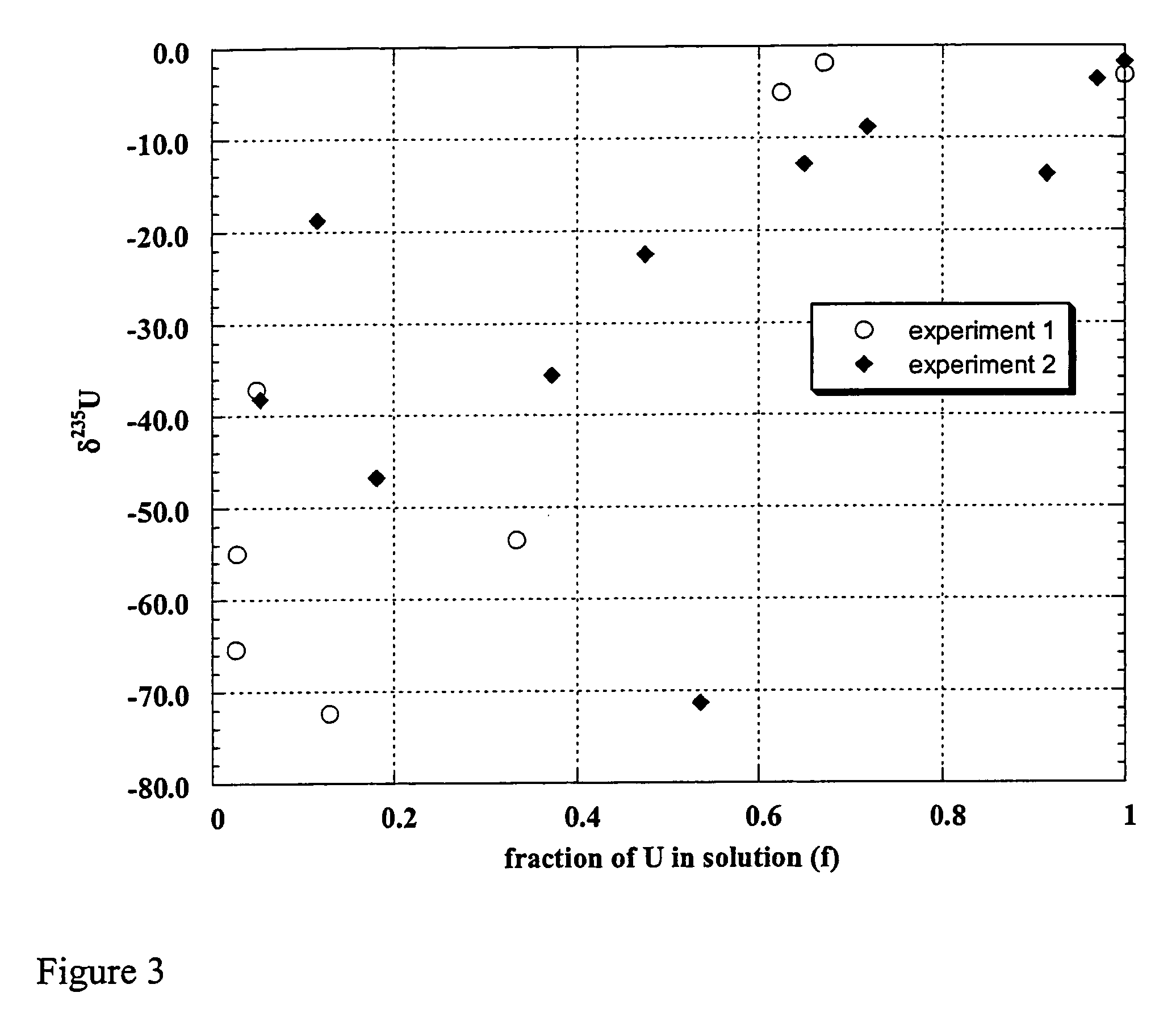Uranium enrichment using microorganisms
a technology of microorganisms and uranium, applied in the field of uranium enrichment using microorganisms, can solve the problems of further hazards, high energy consumption of enrichment processes, and subject to corrosion, and achieve the effect of increasing the separation of the first and reducing the activity of the actinide elemen
- Summary
- Abstract
- Description
- Claims
- Application Information
AI Technical Summary
Benefits of technology
Problems solved by technology
Method used
Image
Examples
example 1
Uranium Enrichment by Shewanella oneidensis
[0077]Materials and Methods
[0078]Bacterial strain and culture conditions. To generate sufficient biomass for the fractionation experiments, Shewanella oneidensis MR-1 (ATTC 7005500) was grown for approximately 24 h at RT in tryptic soy broth (Difco) under aerobic conditions. Cells were harvested in mid-exponential phase by centrifugation and washed three times with anaerobic NaHCO3 (2 g / L) buffer before transfer to the fractionation medium.
[0079]A bicarbonate-buffered freshwater medium was used [described in detail in Kuai et al., 2001]. It contained 5 mM lactate as carbon source and was buffered to pH 6.8 by adding NaHCO3 (1.9 g / l). Salts (in g per liter) were NH4Cl (0.25), KCl (0.5), CaCl2.2H2O (0.15), NaCl (1.0), MgCl2.6H2O (0.62). Vitamins (in mg per liter) were p-aminobenzoic acid (0.05), thiamine-HCl (0.02), pyridoxine-HCl (B6) (0.1), and cyanocobalamin (B12) (0.001). Trace minerals added from a 1000-fold concentrated mixture were (i...
example 2
Uranium Enrichment by Shewanella oneidensis—Dependence on Presence of Living Cells
[0092]Materials and Methods
[0093]Bacterial strain and culture conditions were essentially identical to those described in Example 1.
[0094]Uranium containing species. Uranium was added as the species uranyl acetate, and was prepared as described in Example 1.
[0095]Uranium isotope separation process. The medium was equilibrated for 24 hr in an anaerobic glove box (Coy) under H2:CO2:N2 95:15:balance) atmosphere, after which 100 mL aliquots were dispensed into separate tubes. One tube was used for each experimental condition (live cells, heat-killed cells, inhibited cells, no cells). Filter sterilized uranyl-acetate solution containing 1:1 235U:238U (prepared from a U500 standard, New Brunswick Laboratories) was added to 1.4 mM and the pH of the medium adjusted to 7. After 1 hr, washed cells were injected to a final concentration of 4.7×108 per ml, and the solutions were incubated under constant, gentle st...
example 3
Uranium Enrichment by Shewanella oneidensis
[0107]A third experiment was carried out to confirm results of Examples 1 and 2. The goal was to apply additional precautions to eliminate even minute sources of contamination of the experimental samples with natural or depleted uranium. Although such contamination for the previous experiments in Examples 1 and 2 was deemed unlikely due to the already high standard of laboratory procedures, natural or depleted uranium in the uranium collected for isotope measurements in the experiment in Example 1 and 2 would produce bias measured as apparent fractionation of the isotopes. The third experiment was set up as in Example 2 with the following additional precautions[0108]all glassware, plastics and stirbars were washed in fresh 5% HCl overnight followed by a wash in fresh 1% HCl overnight rinsing with distilled H2O[0109]all media and chemical solutions were prepared with UltraPure water[0110]all chemicals used in the experiment were of ultrapur...
PUM
| Property | Measurement | Unit |
|---|---|---|
| time period | aaaaa | aaaaa |
| time period | aaaaa | aaaaa |
| time period | aaaaa | aaaaa |
Abstract
Description
Claims
Application Information
 Login to View More
Login to View More - R&D
- Intellectual Property
- Life Sciences
- Materials
- Tech Scout
- Unparalleled Data Quality
- Higher Quality Content
- 60% Fewer Hallucinations
Browse by: Latest US Patents, China's latest patents, Technical Efficacy Thesaurus, Application Domain, Technology Topic, Popular Technical Reports.
© 2025 PatSnap. All rights reserved.Legal|Privacy policy|Modern Slavery Act Transparency Statement|Sitemap|About US| Contact US: help@patsnap.com



